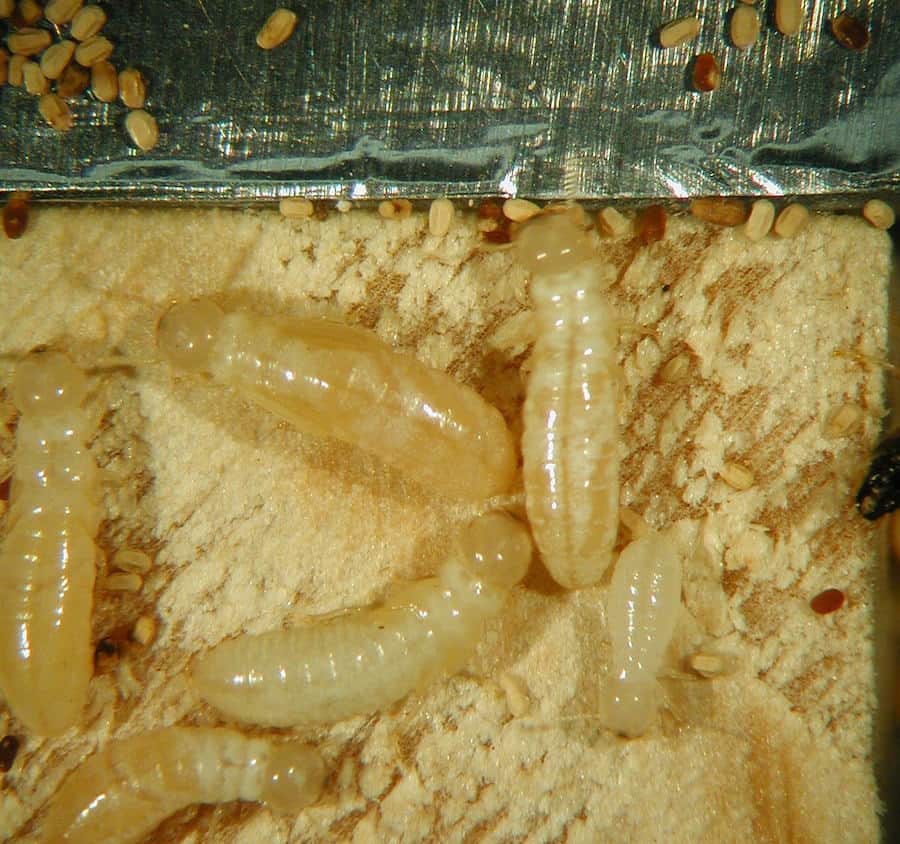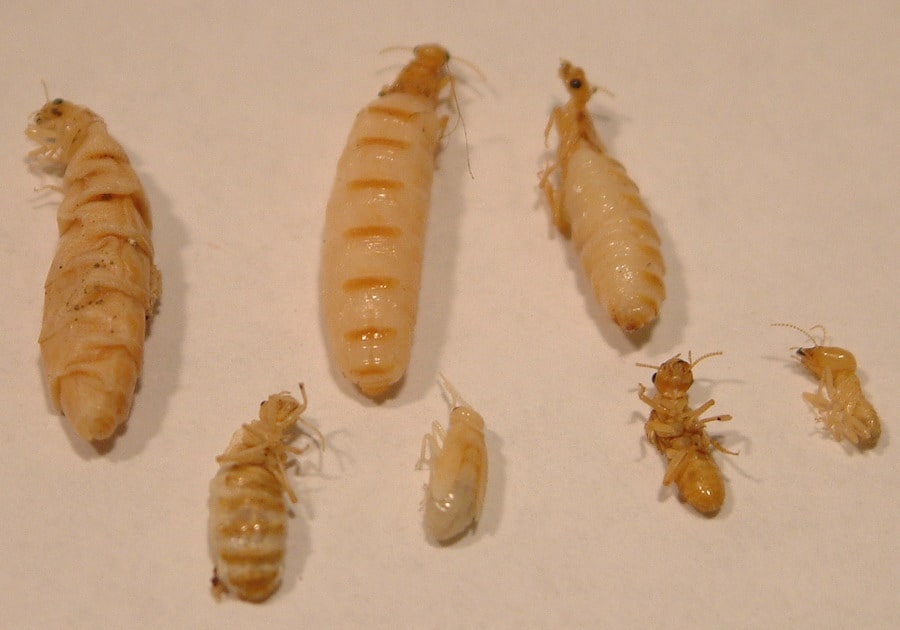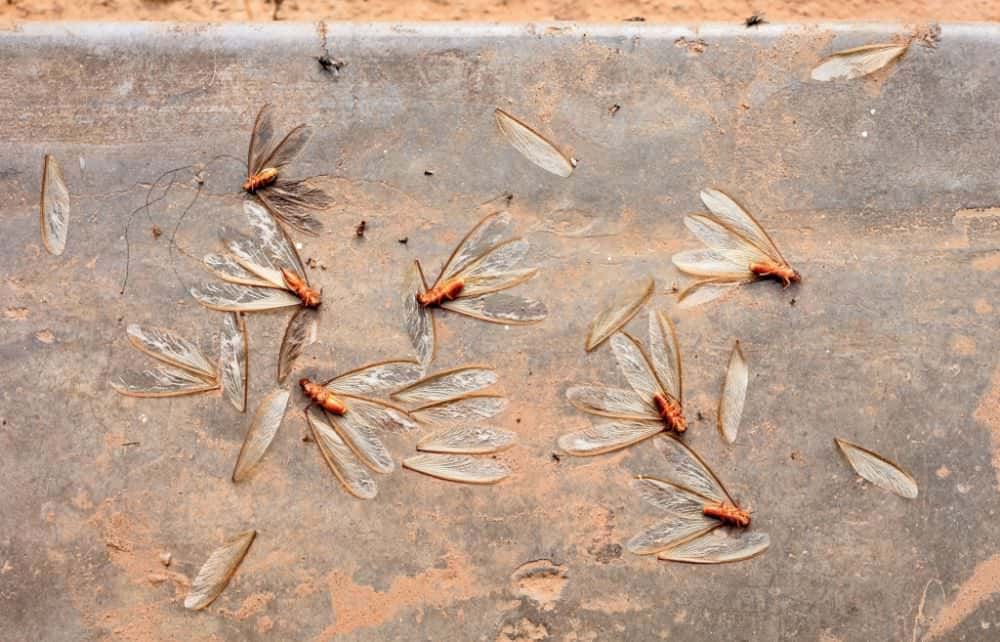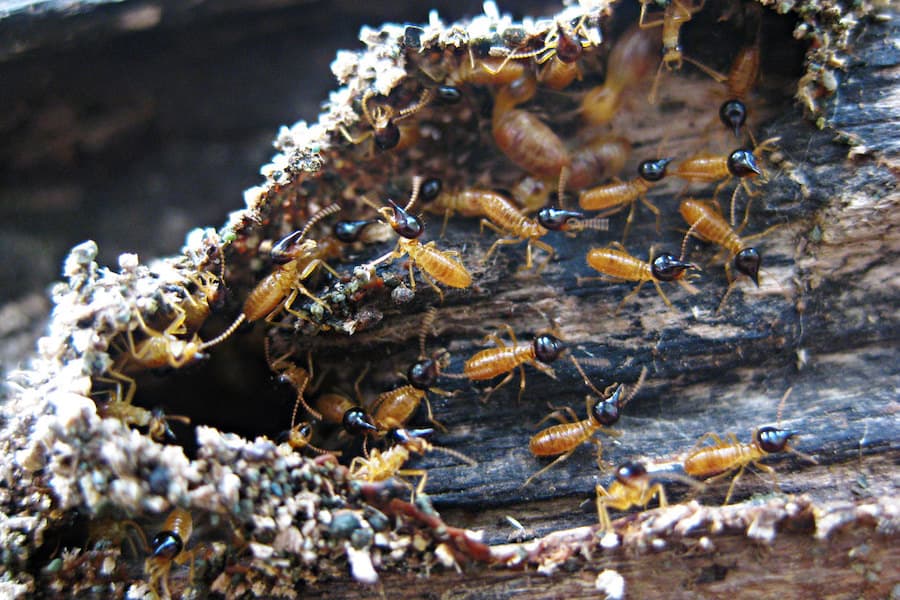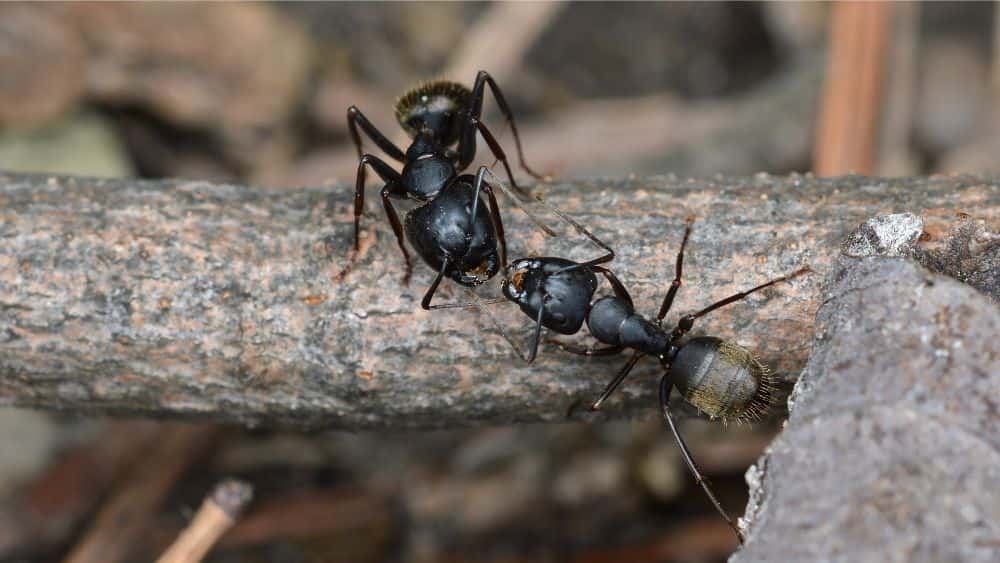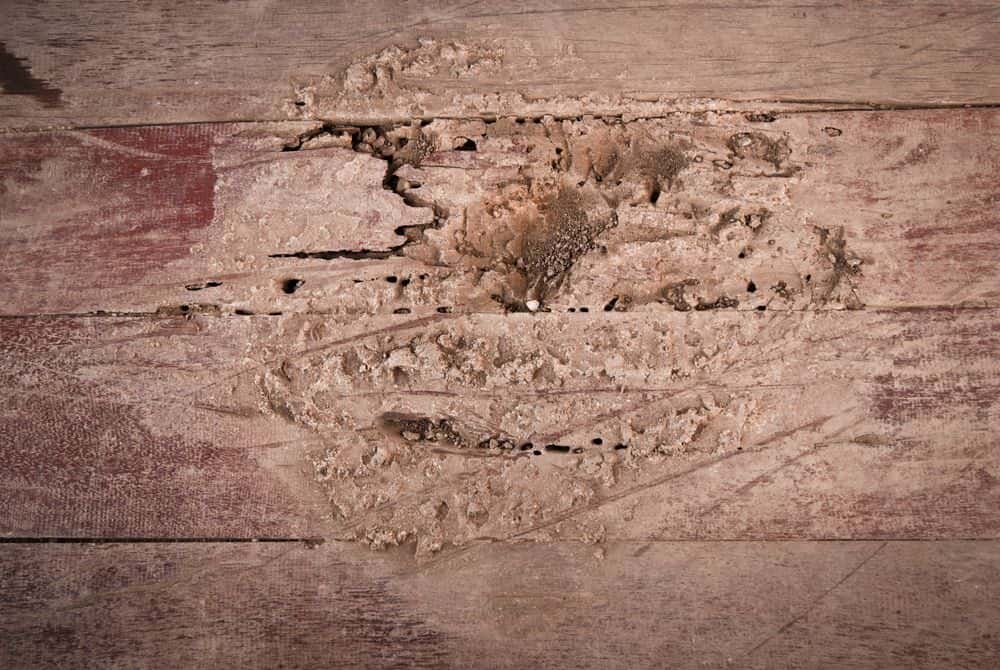Termite Larvae: A Guide To Baby Termites
Termite larvae are, as you would expect, young termites. In this article, you will learn all you need to know about the earliest stages of a termite’s life after hatching.
I will detail what termite larvae look like and where you can find them. You will also discover how to kill termite larvae in the event of an infestation.
What Are Termite Larvae?
Termite larvae are what hatch from termite eggs. These newly born termites are also known as “nymphs” or “immatures.”
Larva is a term used to describe the immature form of many insects. A larva appears similar to a small worm or a maggot. Common pests, such as fleas and mosquitoes, hatch from their eggs as larvae. These larvae molt, shedding their outer skins and growing in size, to eventually form a protective cocoon (i.e. a pupa).
Termite larvae are hemimetabolous insects and they, on the other hand, will not enter into a cocoon stage. Instead, they grow gradually into adults, solely through molting.
Termites are usually referred to as nymphs after their first molt. Nymphs discard their tight outer shells, going up one size. Eventually, each termite larva will develop into a particular caste (hierarchical class) of termite as they reach maturity within the life cycle. These castes include worker, soldier, or reproductive.
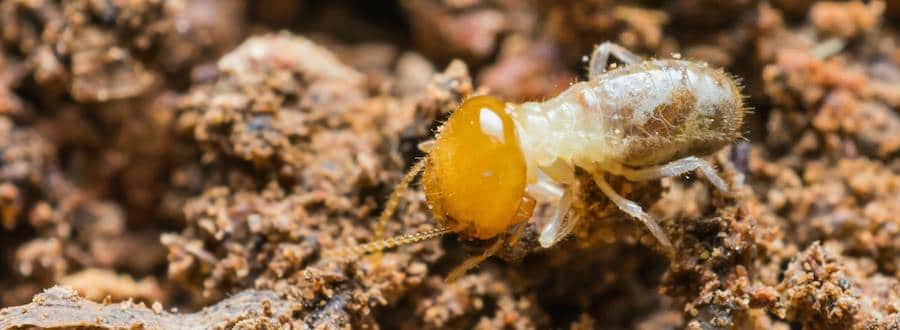
Each caste has a specific function in the colony, with particular traits. Soldiers and workers are sterile, whereas reproductives are not. Soldiers exist to defend the colony. The soldiers of some species can excrete toxic chemicals that repel or harm enemies. Others have large mandibles (jaws) to tear foes apart with.
The population of a termite colony is carefully balanced. A nymph will grow into whichever caste there is a need for. For example, if there is a shortage of soldiers, newly hatched nymphs will likely become soldiers.
The majority of baby termites will become workers. This is because workers are the largest group in the colony. This caste performs the most difficult labors, from expanding the nest to grooming other termites.
What Do Baby Termites Look Like?
Baby termites are born looking similar to adult termites. They do not display distinguishing caste traits until they get older.
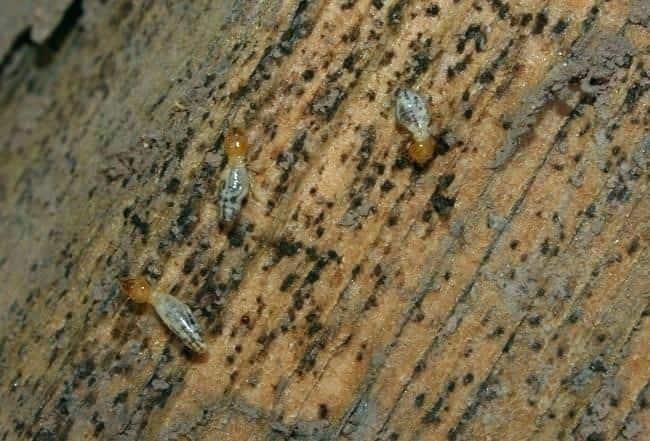
When a termite colony is young, the queen will lay larger eggs. As the colony grows older and the queen matures, egg size decreases. This is because she lays more eggs per batch as the years go by. This difference in egg size is not visually noticeable. You will be able to see termite eggs without the aid of a microscope, but they are very small.
The termites that first emerge from these eggs are similarly tiny. They are a translucent white color and have soft bodies. Termites are born with all six legs and two straight antennae.
Where Are the Larvae Usually Found?
Termite larvae are a rare sight. As they are vulnerable, they reside in chambers deep in the nest, which can vary depending on the type.
Drywood termite colonies reside in wooden structures directly. Subterranean termites need to remain in contact with soil, as they require moisture to survive. Finally, dampwood termites prefer to nest in decaying, damp wood.
In new colonies, young termites are located in the royal chamber. The queen will never leave this chamber after she lays her first eggs. However, as the colony matures, the workers take over the responsibility of caring for the young. As the queen’s egg-laying capacity increases, not all the young will fit in the royal quarters.
Some termite queens can produce thousands of eggs per day. Workers in the colony hollow out special cells for the young in the nest, on a regular basis. Once the queen lays her eggs, workers collect them and deposit them in these cells. The workers then raise the young termites until they are independent.
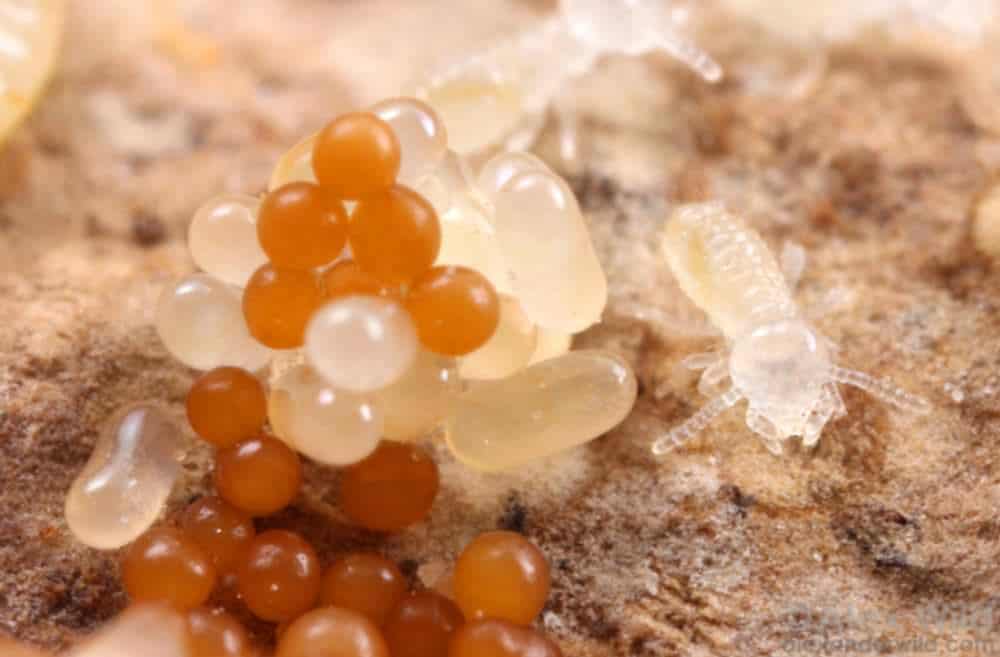
How to Get Rid of Termite Larvae
Getting rid of termite larvae involves targeting the entire colony. Remember that termite young are protected inside the nest. You could have a termite infestation in your home and be completely unaware of it.
Termite alates are the most likely caste to be spotted. Alates are reproductives that have the potential to create their own colonies. They leave the nest, pair up, and set up a new nest as king and queen.
Alates range from dark to light brown in color. They have symmetrical, long wings that break off after they mate. Dampwood termite alates have longer wingspans than drywood or subterranean termites. If you have a mature termite colony in your home, you will see alate swarms. Swarm tubes are built into the structure (for example, in your walls) to allow the reproductive alates to fly out.
The majority of alates do not survive the swarming. Finding alate corpses throughout your home is a strong indicator of an infestation. You are most likely to find the bodies next to windows. If a new colony has been set up nearby, you could also find discarded wings.
Another sign of termites is visibly damaged wood. Due to the termites tunneling inside, wood can begin to blister or darken. If the cause of this damage is termites, the wood will be thin. You can tap these areas with any pointed object (e.g. a knife) and the wood may crumble. You will probably see active termite workers inside such areas.
If you have a house, you can check around the perimeter of your property. You may see tubes of mud connected to your home from the soil. These tubes are how subterranean termites enter the wooden structure from their nest.
You can always break apart a suspected termite tube to check. These tubes are almost guaranteed to have live termites inside them. Once you have confirmed that you have a termite infestation, you can confront it and there are several options for doing so.
Destroying the Nest
Dampwood and drywood termites build their nests inside wooden structures directly. The majority of subterranean termite species do not. The bulk of the colony will be located underground, below or around your property. If you can find and access the nest, you must destroy it. This way, the only live termites will be foraging workers that are already inside the wood in your home.
Termite mounds can look different depending on the species. They may resemble piles of dirt or towers of varying sizes.
By digging into the nest with a shovel, you will see the tunnels and chambers beneath. Termite soldiers may emerge in defense. If you dig deep enough, you may even find termite larvae or the king and queen.
It is possible to destroy the nest physically. However, it is preferable to apply a termiticide, or a pesticide designed to kill termites. This will ensure that there are no survivors.
Contact a Pest Control Professional
Termite infestations are difficult to get rid of by yourself, but pest control professionals have access to treatment methods that are not available commercially.
The extent of the infestation, species of termite and your home will play a role in treatment. Certain building materials can be damaged by some termite treatments (e.g. extreme heat). A pest control expert may use one or more of the following options, depending on the situation.
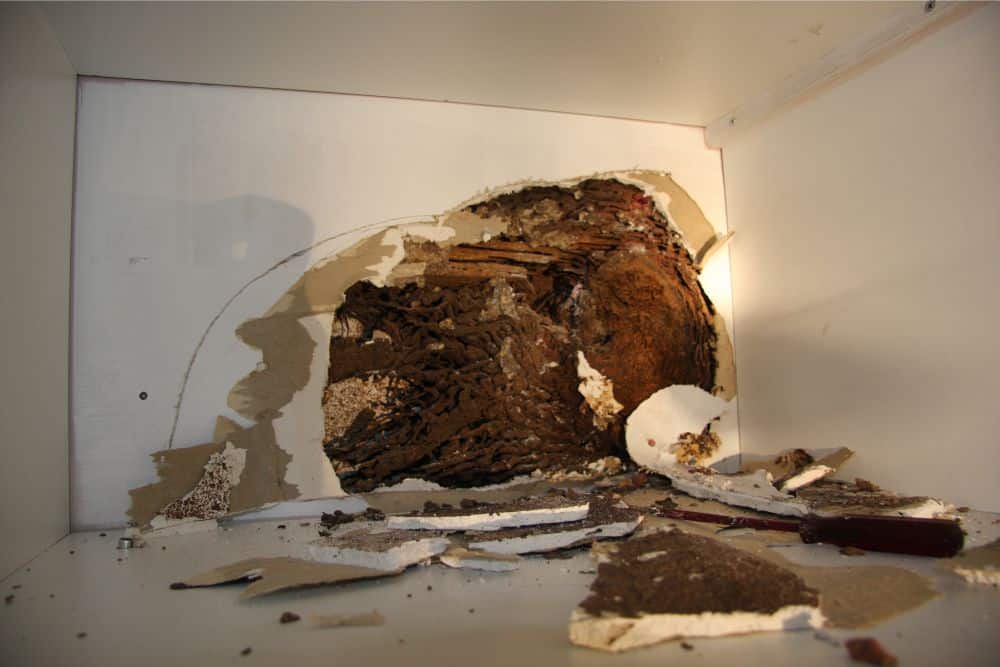
Heat Treatments
Extreme heat can kill termites and termite larvae in a structure. Heat treatments use devices to bring infested wood up to a temperature of at least 120 degrees Fahrenheit. This option is not suitable for all types of wooden structures, so let your professional evaluate and heed their advice.
Fumigation
Fumigation involves using an insecticidal gas on your entire home. The gas will infiltrate hard-to-reach parts of the structure where termites live, such as inside walls. During the process, your home will be covered securely by a tent.
You will have to leave your home for several days or longer, as the gas kills off the termites. This method has a high success rate at destroying termites and is recommended for a heavy infestation.
Dust
Dusting is a less invasive chemical option for dealing with termite infestations. Most termite dust contains a chemical that dehydrates the termites over time, but it may take several weeks for the entire colony to die out.
The dust is set in areas that termites will come into contact with it. For example, tubes leading from the underground nest to your home. The toxic dust attaches to the bodies of foraging termites. The termites then innocently return to the nest, unknowingly carrying the insecticide with them.
Termites are social insects, meaning they come into contact with each other often. Worker termites groom and feed other castes, including termite larvae. The workers will transmit insecticide to the entire colony.
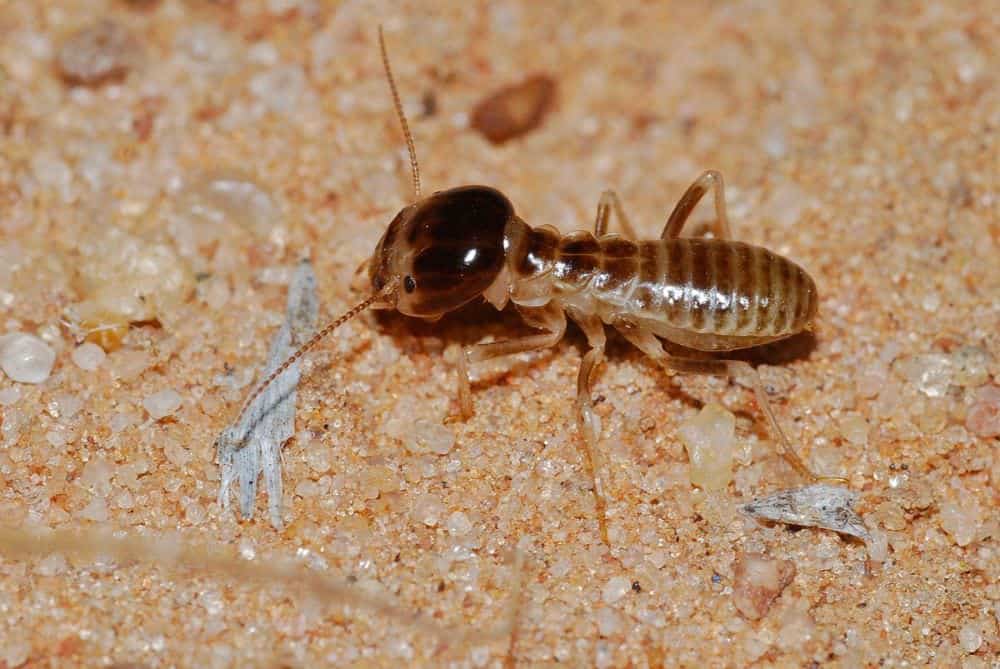
Prevention
Once you have eradicated the termites, preventative measures should be taken. You do not want another infestation to occur.
You can have a chemical soil barrier set around your property, which will discourage termites from approaching your home. Hire a pest control professional to do this or purchase a chemical to apply yourself.
Another option is setting out baits as deterrents. The termites will consume the bait rather than approach your home. As with chemical soil barriers, baits can be set out by you or a professional.
Summary
Now you are familiar with the habits and appearance of young termites. Understanding how these pests function is an advantage when it comes to eradicating them.
Termite larvae may be protected in the nest, but they are not invulnerable. Just like any other member of the colony, they can be killed with the right treatment.

